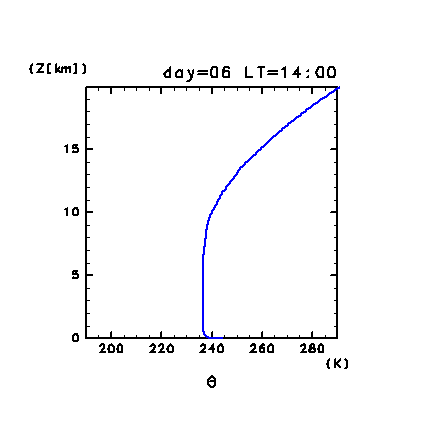|
3.d. Intensity of convection (1)
|

|
|
Figure 7:
Vertical profile of horizontal mean potential temperature
below the height of 1 km at LT=14:00 of the dust-free
case.
|
As is shown in
equation (1),
wind velocity associated with convection is given by
convection layer thickness and
temperature deviation of plumes.
In this section, we will consider how the potential
temperature deviation of convective plumes
can be estimated.
Consulting the features of convective plume generation
demonstrated in
Figure 4 (upper
left),
it can be regarded that
plumes are produced by thermal
instability of the thermal boundary layer.
This suggests that potential temperature deviation of a
convective plume is roughly
equal to that of the thermal boundary layer.
Figure 7 is
a magnified plot below the level of 1 km height
of
Figure 3a (right panel).
Careful observation of the profile indicates that
the thermal boundary layer can be further divided into
two regions according to the magnitude of
the vertical gradient of potential temperature.
One is the layer below the level of 50 m where
the vertical gradient of potential temperature
is quite large
(conduction layer),
and the other is the layer
between the levels of 50 m and about 400 m
where
the vertical gradient of potential temperature
is relatively moderate
(transition layer).
|